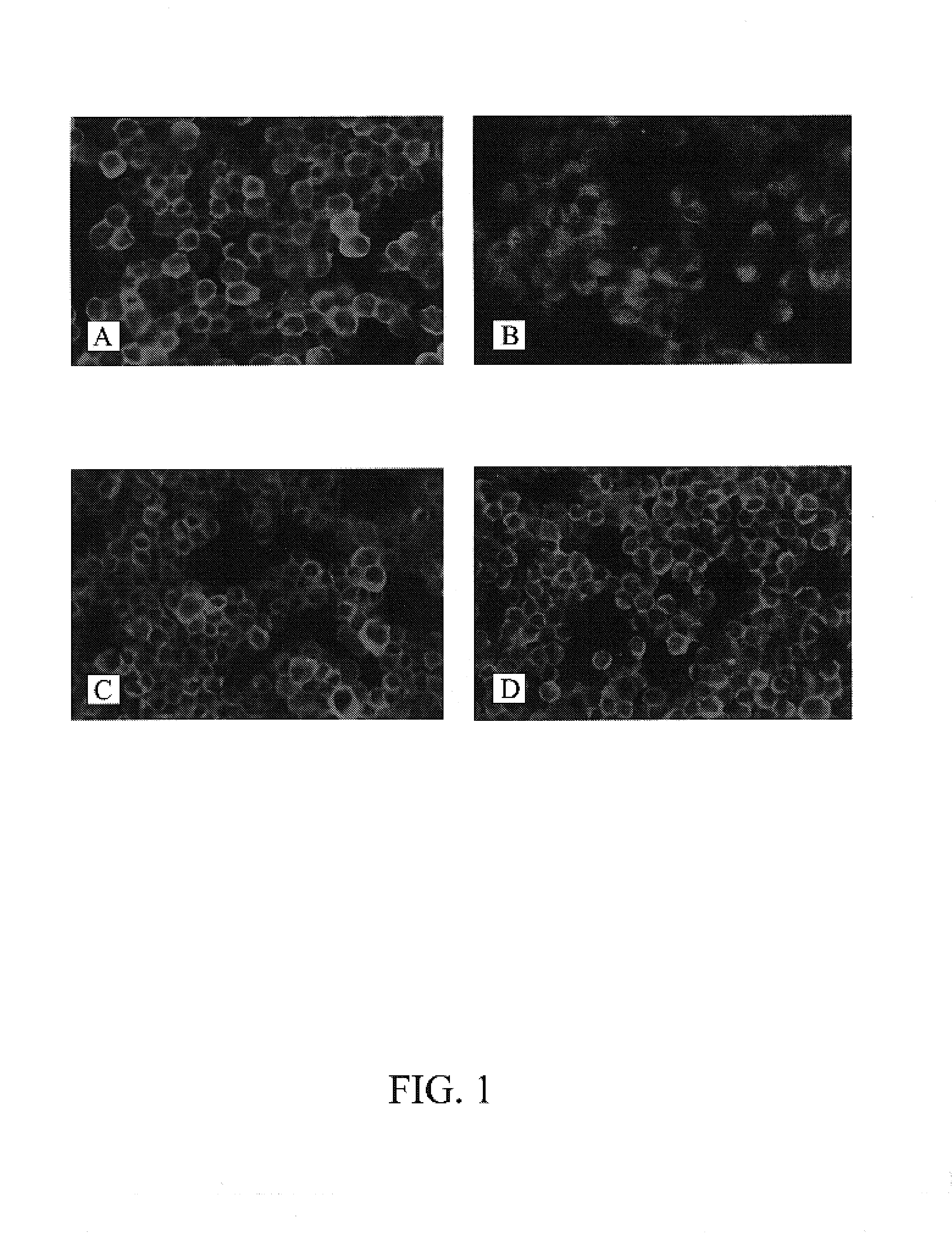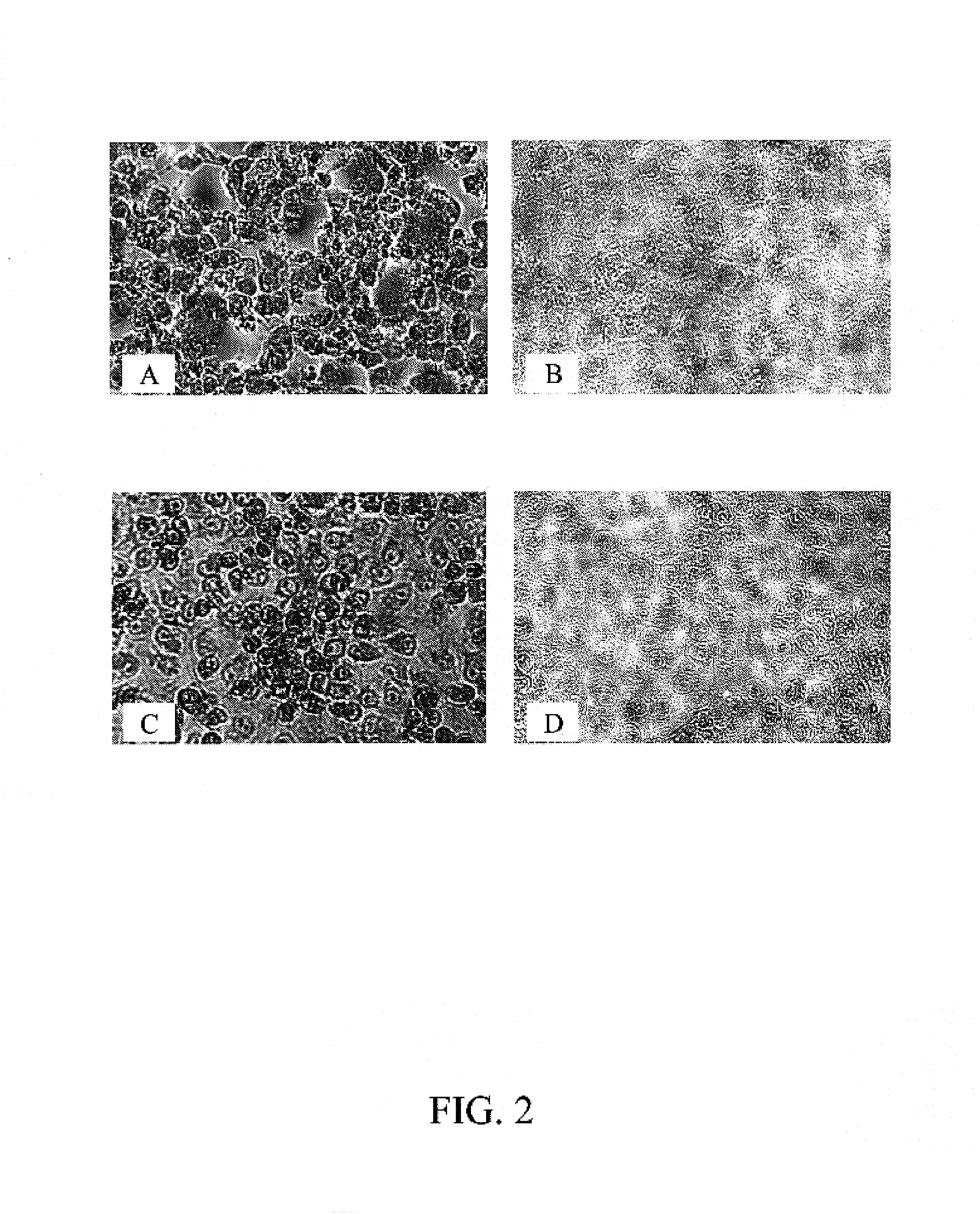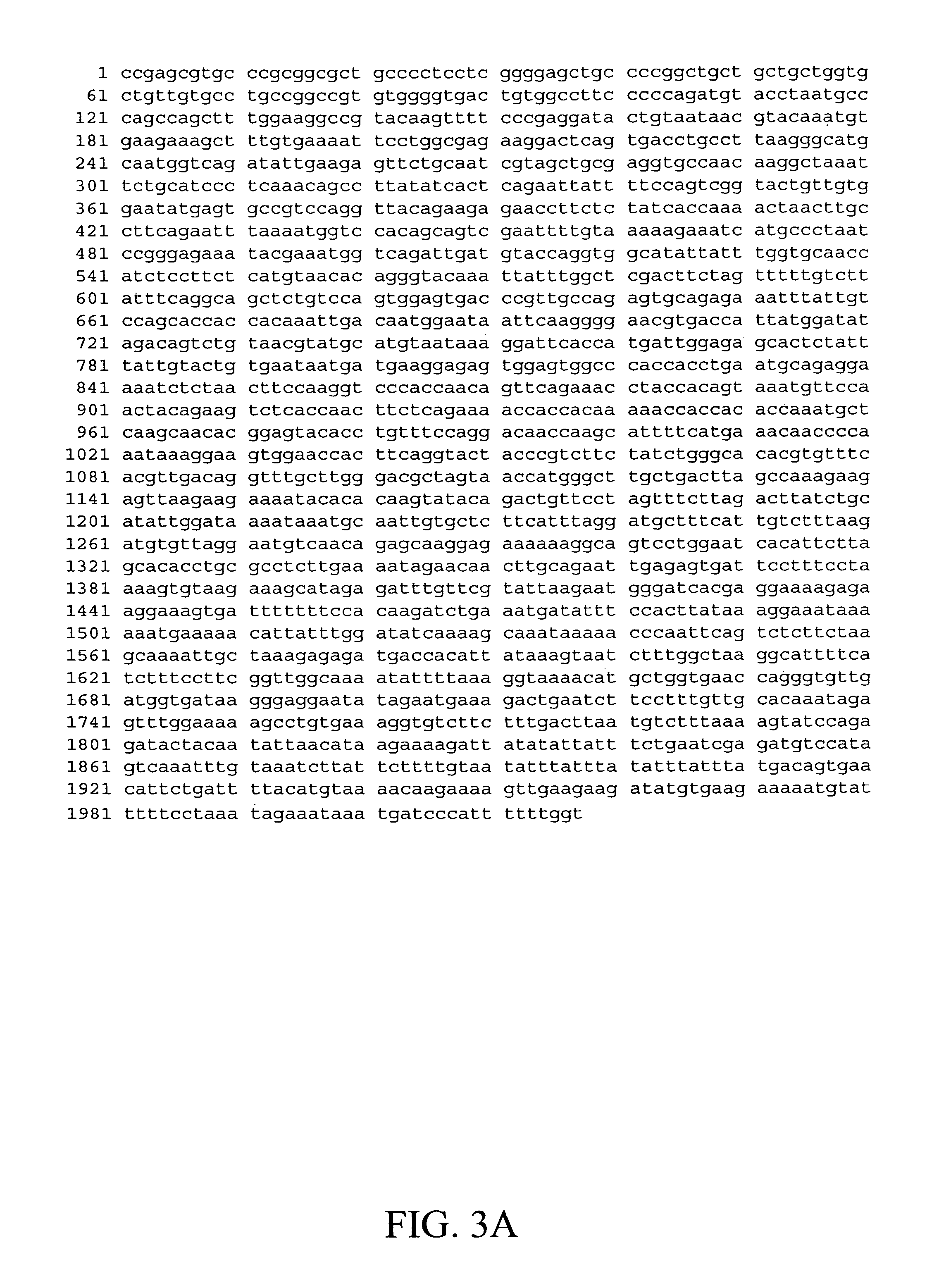Cells for detection of enteroviruses
- Summary
- Abstract
- Description
- Claims
- Application Information
AI Technical Summary
Benefits of technology
Problems solved by technology
Method used
Image
Examples
example 1
Generation of Transgenic H292 and Buffalo Green Monkey Kidney (BGMK) Cells Which Express Human Decay Accelerating Factor (hDAF)
[0094]Monolayers of human mucoepidermoid cells (NCI-H292; also referred to as “H292” cells; ATCC # CCL-1848) and BGMK cells (Diagnostic Hybrids, Inc., catalog # 53) were individually subcultured with the help of trypsin, seeded into 12-well plates in the presence of E-MEM culture medium (Diagnostic Hybrids Inc.), and incubated at 36° C. incubator for 48 hr. The freshly formed cell monolayer was used for transfection.
[0095]The hDAF gene (GenBank Accession # M15799) was cloned in pcDNA3 (Invitrogen) using standard molecular biological techniques. The plasmid DNA of pcDNA3-DAF was used to transform E. Coli, and bacterial colonies which contained the plasmid DNA were selected and expanded by growing in broth culture for 18 hr. The plasmid DNA was purified from the bacteria using a commercial kit (Qiagen Inc.) and was used to transfect H292 and BGMK cells with SU...
example 2
Detection of Enterovirus Isolates Using BGMK-hDAF Cells
[0100]To compare the sensitivity for the detection of enteroviruses by BGMK-hDAF cells with the parental BGMK cells, the cytopathic effect of isolates of echoviruses and of Coxsackie viruses on each cell type was determined as follows. Briefly, each cell type was seeded at a density of 2×105 cells / ml onto a 48-well plate using 0.2 ml per well. After the cells formed a monolayer (usually about 2-3 days), they were inoculated with serial dilutions of different isolates of enteroviruses. The inoculated cells were centrifuged at 700×g for 45 min at 22° C. then incubated at 36° C. in a 5% CO2 incubator. The extent of cytopathic effect (CPE) induced by enterovirus infection was recorded daily. The typical CPE of enteroviruses was observed under the microscope as reflectile, small cells as shown in FIGS. 2B and D. Both the control BGMK and BGMK-hDAF cells showed a similar CPE, demonstrating that hDAF expression does not alter the chara...
example 3
Detection of Enteroviruses in Clinical Samples Using BGMK-hDAF Cells (Small Scale Investigation)
[0112]The above results using purified enterovirus isolates suggested to the inventors that BGMK-hDAF cells can enhance the early detection of low titer enteroviruses from the clinical specimen which is very important for patient management. To test whether this hypothesis may be applied to viruses present in clinical samples, the following experiment was carried out using clinical specimens.
[0113]BGMK and BGMK-hDAF cells were seeded onto a 48 well plate with 2×105 cells / ml using 0.2 ml per well and incubated in a 36° C., 5% CO2 incubator for 3 days. Four previously tested enterovirus-positive original clinical samples were separately inoculated into the wells. The inoculated cells were centrifuged at 700×g for 45 min at 22° C. and incubated at 36° C. The cells were observed daily and CPE was recorded. The results are shown in Table 4.
[0114]
TABLE 4Detection of Enteroviruses From Clinical ...
PUM
| Property | Measurement | Unit |
|---|---|---|
| Decay rate | aaaaa | aaaaa |
| Sensitivity | aaaaa | aaaaa |
Abstract
Description
Claims
Application Information
 Login to View More
Login to View More - R&D Engineer
- R&D Manager
- IP Professional
- Industry Leading Data Capabilities
- Powerful AI technology
- Patent DNA Extraction
Browse by: Latest US Patents, China's latest patents, Technical Efficacy Thesaurus, Application Domain, Technology Topic, Popular Technical Reports.
© 2024 PatSnap. All rights reserved.Legal|Privacy policy|Modern Slavery Act Transparency Statement|Sitemap|About US| Contact US: help@patsnap.com










